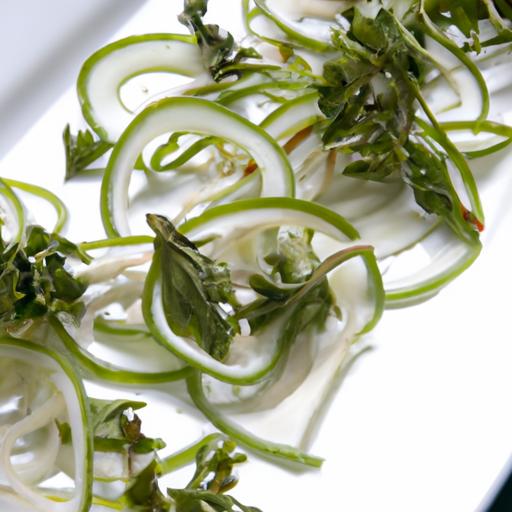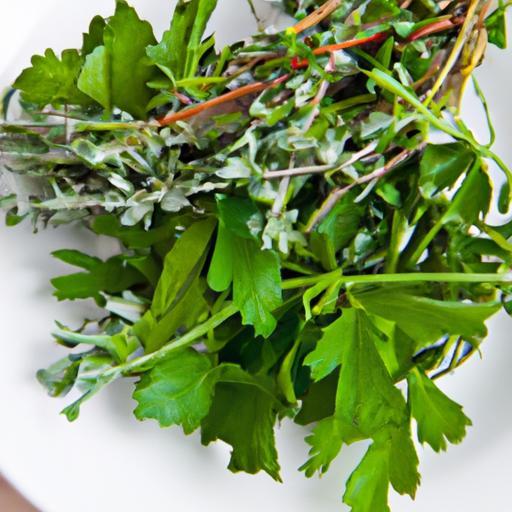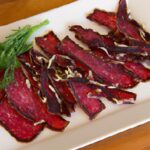There’s something undeniably magical about harvesting fresh herbs and drying them at home-capturing nature’s essence, leaf by leaf, for future culinary or aromatic delight. But what happens when those vibrant bundles you’ve carefully gathered and hung in the air start to develop unwelcome fuzzy patches of mold? It’s a frustrating dilemma many herbal enthusiasts encounter, turning what should be a simple preservation ritual into a puzzling mystery. So, why are your herbs molding while air drying, and how can you save your precious harvest from going to waste? Dive inside as we unravel the common causes behind this pesky problem and share practical tips to keep your herbs fresh, fragrant, and mold-free every time.
Why are my herbs molding while air drying?
This common question puzzles many home herb enthusiasts and gardeners who wish to preserve their fresh garden bounty. Fresh herbs hold aromas and flavors that can beautifully enhance any dish, but when mold creeps in during air drying, it not only ruins the batch but dampens your enthusiasm. Understanding the root causes of mold growth, optimal drying conditions, and techniques to maintain freshness can empower you to dry herbs successfully every time.
Prep and Cook Time
- Preparation: 10 minutes
- Drying: 7-14 days (depending on herb type and environment)
- Total Time: Approximately 1-2 weeks
Yield
Yield depends on the amount of fresh herbs but typically dries down to about 1/4 the original volume, ideal for storage in airtight containers for months.
Difficulty Level
Easy to Medium – Perfect for beginners with a little patience and careful attention.
Ingredients
- Fresh herbs of choice (basil, rosemary, thyme, oregano, parsley, etc.)
- String or twine for bundling
- Paper towels or breathable drying surface
- Mesh screen or drying rack (optional but recommended)
- Well-ventilated space with low humidity
Instructions
- Harvest herbs in the early morning, after the dew evaporates but before the sun gets too hot. This retains maximum oils and flavor while minimizing moisture.
- Gently rinse herbs under cool water to remove dirt and insects. Shake off excess water and pat dry carefully with paper towels, ensuring no lingering moisture.
- Bundle stems together in small bunches using string or twine. Avoid overcrowding-smaller bundles dry faster and more evenly, reducing mold risk.
- Hang bundles upside down in a well-ventilated area away from direct sunlight. Ideal locations include a dry kitchen corner, attic, or porch with good air circulation.
- To enhance airflow, use a fan set on low distant from herbs or a mesh drying rack laid flat. Ensure space between bundles or stems for maximum air movement.
- Check herbs daily for signs of moisture or mold. If any stems feel damp or smell off, separate those leaves and dry them faster or discard if mold is advanced.
- Once leaves crumble easily between your fingertips, herbs are fully dried. Strip leaves from stems and store in airtight containers away from heat and light.
Chef’s Notes: Tips for Success
- Avoid drying herbs in humid or poorly ventilated rooms. Mold thrives with excess moisture, so keep humidity below 60% if possible.
- Use breathable materials – avoid plastic bags or sealed containers during drying, as trapped moisture encourages mold formation.
- Experiment with herb types: Some herbs like rosemary and thyme dry faster; delicate herbs like basil or parsley require extra vigilance.
- Salvaging moldy herbs: If mold appears, discard affected portions immediately. For very mild surface mold, washing and quick oven drying (low heat, under 180°F) may save some herbs but can reduce flavor.
- Consider alternative drying methods: Use a dehydrator or oven drying at low temp for fragile herbs if air drying repeatedly causes mold issues.
Serving Suggestions
Once perfectly dried, your herbs can elevate countless dishes. Crush and sprinkle over roasted vegetables, add to marinades, mix into herb salts, or use as a garnish for soups and salads. Experiment with herb blends for aromatic savory rubs or rustic bread toppings.
Storage tip: Store dried herbs in labeled glass jars with a tight seal. Freshness lasts longer when kept in cool, dark cabinets.

| Herb | Drying Time | Optimal Humidity | Notes |
|---|---|---|---|
| Basil | 7-10 days | Below 60% | Highly sensitive to moisture; dry quickly |
| Rosemary | 10-14 days | Below 60% | Resilient, less prone to mold |
| Thyme | 7-14 days | Below 60% | Small leaves dry quickly; great for blends |
| Oregano | 7-10 days | Below 60% | Robust flavor, stores well |
For an in-depth guide on herb storage and related culinary techniques, check out our comprehensive article on herb preservation. Want to learn more about mold prevention? The EPA’s official mold resources offer excellent tips on household mold control.
Q&A
Q: Why are my herbs developing mold while air drying?
A: Mold appears when herbs dry too slowly or unevenly, creating a damp environment perfect for fungal growth. High humidity, poor air circulation, and bunches that are too thick can trap moisture, allowing mold spores to settle and grow on your herbs.
Q: How does humidity affect the drying process of herbs?
A: Humidity is the arch-nemesis of air drying! When the air is heavy with moisture, herbs lose water more slowly. This slow drying keeps leaves damp for longer, encouraging mold to set in. Ideally, herbs need a dry, well-ventilated atmosphere where moisture can quickly escape.
Q: Can the way I hang or place my herbs contribute to molding?
A: Absolutely. Crowding herbs together or placing them in areas with stagnant air causes moisture to linger. If your bundles are thick or tied too tightly, the inner leaves don’t get enough airflow, turning into cozy mold castles in no time.
Q: What are some signs that my herbs are molding during drying?
A: Besides the telltale fuzzy white, gray, or black patches, you might notice a musty or sour smell instead of the fresh, earthy scent of drying herbs. If leaves feel slimy or unusually soft rather than crisp, it’s a mold alert!
Q: How can I prevent mold from forming while air drying herbs?
A: To beat the mold, start by harvesting herbs in the morning after the dew has dried. Use small, loose bundles and hang them in a warm, dry spot with good airflow-think airy kitchens or breezy porches. Rotate the bundles occasionally and avoid direct sunlight, which can cook your herbs instead of drying them.
Q: Are some herbs more prone to mold than others?
A: Yes! Tender, leafy herbs like basil and mint can be trickier to dry because their moisture content is higher compared to woody herbs like rosemary or thyme, which naturally resist mold. These delicate herbs especially need extra attention to airflow and drying speed.
Q: Can I salvage herbs that have started molding?
A: It’s best not to take the risk. Mold can produce toxins that linger even after drying. If you spot mold early, discard the affected herbs entirely and adjust your drying setup to avoid repeats.
Q: Are there alternative drying methods if air drying isn’t working?
A: Definitely! If your climate is humid or space limited, try drying herbs in the oven at low temperatures (around 100°F/40°C) with the door cracked, or use a food dehydrator for consistent airflow and controlled heat. These methods often speed up drying and fight mold better than open-air.
Q: Can I speed up air drying without risking mold?
A: Speed is good, but gentle speed! Using a fan to boost airflow and picking a warm, dry day can help. Just avoid direct heat blasts, which can scorch herbs. The goal is even drying-fast enough to deter mold, slow enough to preserve flavor.
Q: Why does drying herbs properly matter?
A: Proper drying locks in flavor, aroma, and medicinal qualities. Moldy or poorly dried herbs lose potency and can pose health risks. Crafting that perfect batch of dried herbs means you get to enjoy your garden’s bounty safely and deliciously all year round!
Wrapping Up
As you embark on your next herb-air-drying adventure, remember that a little knowledge and a few careful steps can make all the difference between a flourishing fragrant bundle and a sad, moldy mess. Understanding why herbs mold while air drying-whether due to excess moisture, poor airflow, or crowded conditions-empowers you to create the perfect environment for nature’s flavors to preserve themselves beautifully. With these tips in hand, your kitchen will soon be filled with the crisp, earthy aroma of perfectly dried herbs ready to elevate every dish. So hang those sprigs with confidence, watch patience work its magic, and say goodbye to mold for good. Happy drying!


